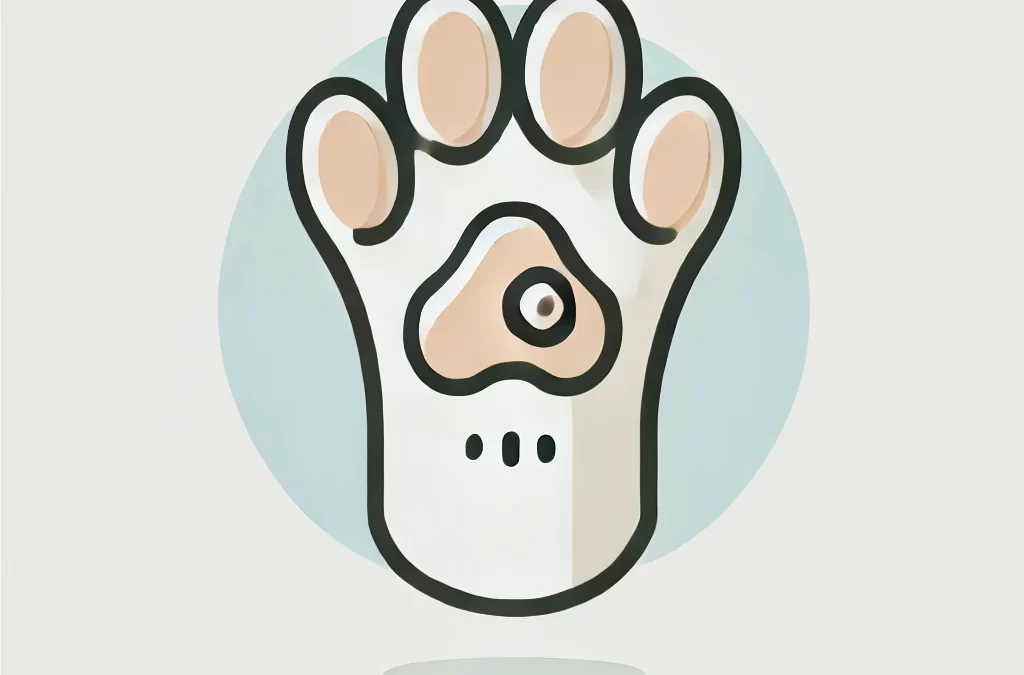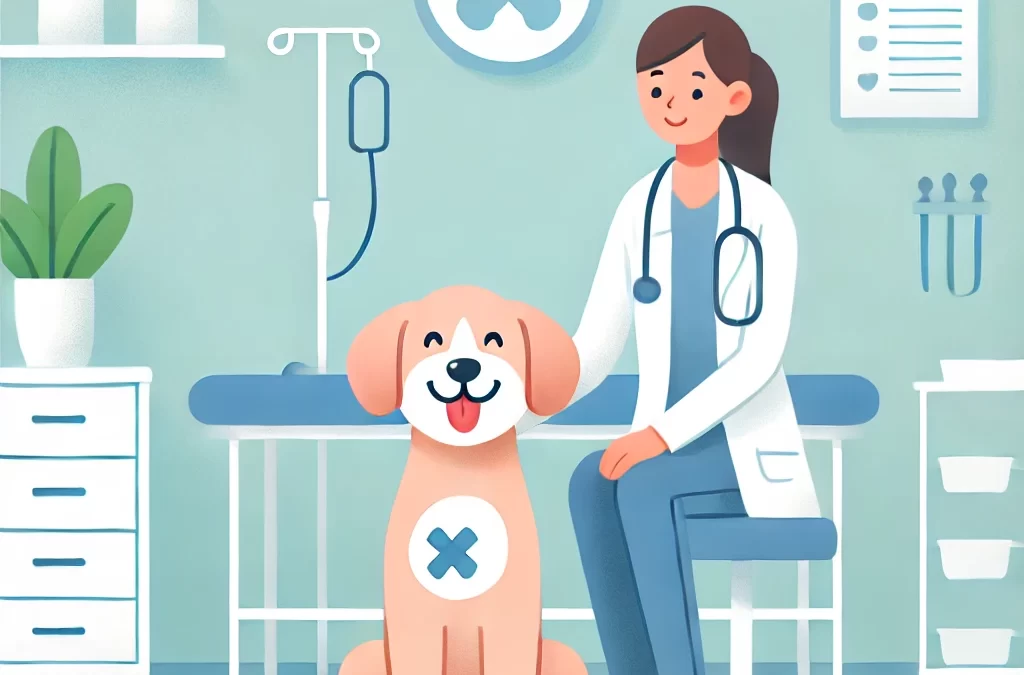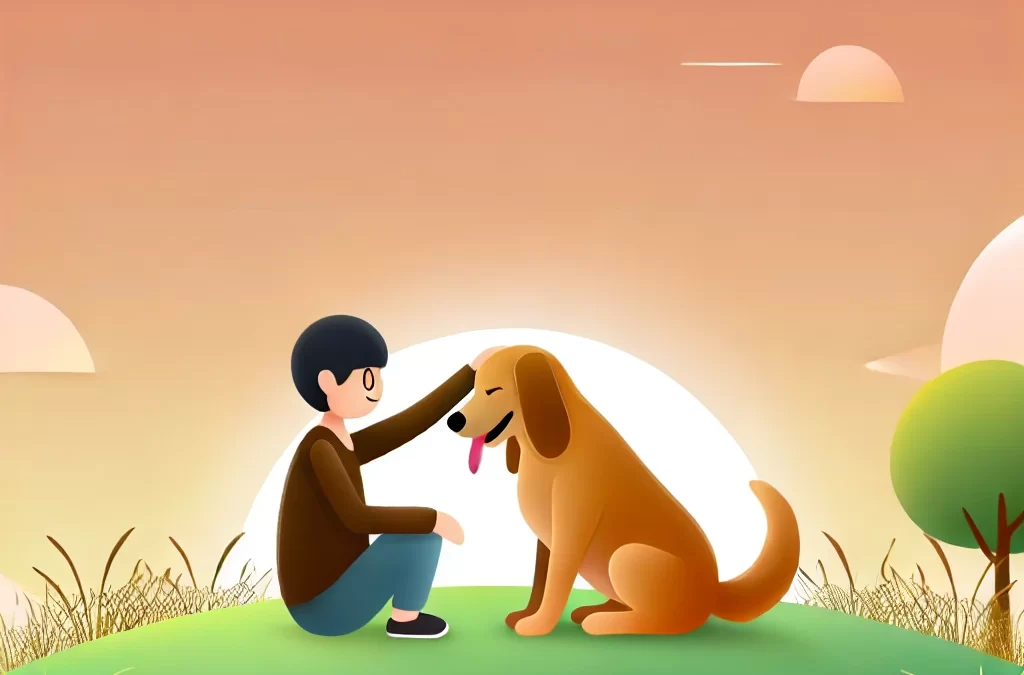
por TCMVET | 29 de novembro de 2024 | Câncer e tumores caninos
Quando confrontados com o fardo emocional e financeiro do diagnóstico de um tumor em um cão, muitos donos de animais de estimação se sentem sobrecarregados pelos custos associados ao tratamento. No entanto, a remoção de tumores de cães de baixo custo não é apenas possível, mas também acessível com os recursos certos e um pouco de criatividade. Este guia explora maneiras únicas e práticas de garantir que seu amigo peludo receba os cuidados de que precisa sem sobrecarregar sua carteira.
Compreendendo os tipos de tumores e a necessidade de remoção
Nem todos os tumores exigem intervenção cirúrgica imediata. Alguns, como lipomas (tumores gordurosos benignos), podem representar pouca ou nenhuma ameaça à saúde do seu cão. Consultar seu veterinário para avaliar a natureza do tumor é o primeiro passo para tomar uma decisão informada. Se a remoção for considerada necessária, explore opções econômicas para resolver o problema.
Abordagens criativas para remoção acessível de tumores em cães
Escolas veterinárias: aprendendo e economizando
Hospitais veterinários de ensino geralmente oferecem serviços de menor custo, já que os alunos, sob a orientação de profissionais experientes, realizam procedimentos. Enquanto os custos são reduzidos, a qualidade do atendimento permanece alta, tornando esta uma excelente opção para donos de animais de estimação preocupados com o orçamento.
Clínicas Veterinárias Sem Fins Lucrativos
Muitas organizações sem fins lucrativos e de bem-estar animal oferecem cuidados veterinários subsidiados, incluindo remoção de tumores. Organizações de pesquisa em sua área que dão suporte a donos de animais de estimação de baixa renda, como as filiais da Humane Society ou SPCA, que podem fornecer auxílio financeiro.
Plataformas de Crowdfunding
Plataformas como GoFundMe ou Waggle permitem que donos de animais de estimação compartilhem a história de seus cães e arrecadem fundos para procedimentos médicos. Uma narrativa sincera e fotos podem encorajar doadores a contribuir para o bem-estar do seu animal de estimação.
Planos de pagamento com veterinários locais
Algumas clínicas veterinárias estão abertas a estabelecer planos de pagamento para cirurgias caras. Esta opção permite que você distribua o custo por vários meses, aliviando o fardo financeiro imediato.
Recuperação e cuidados posteriores faça você mesmo
Embora a cirurgia em si deva sempre ser realizada por um veterinário licenciado, você pode economizar dinheiro gerenciando os cuidados pós-operatórios em casa. Aprenda a limpar feridas, administrar medicamentos e criar um espaço de recuperação confortável para seu cão para minimizar visitas adicionais à clínica.
Explorando alternativas: quando a cirurgia não é uma opção
Se a cirurgia estiver além de suas possibilidades financeiras ou não for recomendada devido à saúde do seu cão, terapias alternativas podem ajudar a controlar o tumor. Algumas opções holísticas incluem:
- Suplementos de ervas: remédios naturais como açafrão, olíbano e fórmulas da medicina tradicional chinesa, como Chuanxiong, são conhecidos por suas propriedades anti-inflamatórias.
- Óleo de CBD: O óleo de CBD de espectro total pode ajudar a reduzir a inflamação e promover o bem-estar geral.
- Ajustes na dieta: dietas anticâncer com foco em alimentos integrais, com baixo teor de carboidratos e ricos em proteínas podem retardar o crescimento do tumor.
Medidas preventivas para evitar custos futuros
Cuidados preventivos podem reduzir a probabilidade de formação de tumores em primeiro lugar. Check-ups veterinários regulares, uma dieta balanceada e evitar exposição a agentes cancerígenos como fumaça de tabaco podem promover uma vida mais saudável para seu cão. A detecção precoce é fundamental; tumores pequenos são geralmente mais fáceis e menos dispendiosos de tratar do que os avançados.
Compaixão e engenhosidade: as chaves para cuidados acessíveis
Encontrar opções de baixo custo para remoção de tumores em cães requer engenhosidade e determinação. Ao alavancar organizações sem fins lucrativos, apoio comunitário e terapias alternativas, você pode garantir que seu cão receba o cuidado de que precisa sem dificuldades financeiras. Lembre-se, sua criatividade e amor por seu animal de estimação podem abrir caminho para soluções compassivas e eficazes.
Seja por meio da conexão com uma rede de provedores de cuidados acessíveis ou da adoção de abordagens holísticas, a saúde do seu cão não precisa ter um custo intransponível. Deixe que esta jornada nos lembre do vínculo inabalável entre os animais de estimação e seus donos — um relacionamento que vale todo esforço.

por TCMVET | 28 de novembro de 2024 | Câncer e tumores caninos
Quando seu cão começa a mancar ou lamber as patas excessivamente, o culpado pode ser um cisto interdigital — uma condição comum e preocupante. Embora esses cistos sejam tipicamente benignos, sua aparência pode às vezes levar os donos de animais de estimação a questionar: isso pode ser um sinal de algo mais sinistro, como câncer? Vamos nos aprofundar neste tópico com novos olhos, explorando as distinções, conexões potenciais e como melhor abordar essas questões para o bem-estar do seu cão.
O que são cistos interdigitais?
Cistos interdigitais, também conhecidos como furúnculos, são caroços cheios de fluido que se formam entre os dedos dos pés de um cão. Eles resultam da inflamação dos folículos capilares nos espaços interdigitais, frequentemente causados por:
- Trauma: Cortes ou arranhões nas patas.
- Alergias: Alergias ambientais ou alimentares que levam à lambida excessiva.
- Predisposições genéticas: Certas raças, como Bulldogs e Labradores Retrievers, são mais propensas.
- Corpos Estranhos: Lascas ou detritos incrustados na pele.
Embora os cistos interdigitais geralmente não sejam cancerígenos, sua natureza recorrente pode causar desconforto, infecção e até claudicação.
Cistos interdigitais podem estar relacionados ao câncer?
A resposta curta: raramente, mas não totalmente impossível.
A maioria dos cistos interdigitais são benignos e não estão relacionados ao câncer. No entanto, a inflamação crônica causada por cistos persistentes pode potencialmente criar um ambiente propício a condições mais graves ao longo do tempo. Este fenômeno, conhecido como carcinogênese induzida por inflamação crônica, destaca como a irritação prolongada pode aumentar o risco de alterações malignas nos tecidos.
Além disso, em casos muito raros, caroços inicialmente identificados como cistos podem na verdade ser algo mais sério, como:
- Squamous Cell Carcinoma (SCC): Um tipo de câncer de pele que pode se desenvolver nas almofadas das patas ou entre os dedos.
- Tumores de mastócitos (MCTs):Esses tumores, embora comumente encontrados em outros lugares, podem ocasionalmente aparecer em locais incomuns, como as patas.
- Melanoma: Melanomas malignos também podem se manifestar perto das almofadas das patas e assemelhar-se a crescimentos semelhantes a cistos.
Como diferenciar entre cistos e câncer
Um diagnóstico adequado é crucial. Aqui está o que observar:
- Forma e textura: Os cistos são geralmente macios, redondos e cheios de fluido. Os tumores podem parecer duros e irregulares.
- Taxa de crescimento: Cistos benignos crescem lentamente, enquanto tumores malignos geralmente crescem rapidamente.
- Cor e Ulceração: Os tumores cancerígenos podem ficar descoloridos, ulcerados ou sangrar espontaneamente.
- Resposta ao tratamento: Os cistos geralmente respondem a antibióticos, medicamentos anti-inflamatórios ou drenagem, enquanto os tumores cancerígenos não.
Os veterinários podem recomendar exames diagnósticos como aspiração por agulha fina (PAAF) ou biópsia para confirmar se um tumor é benigno ou maligno.
Cuidados holísticos e preventivos para a saúde das patas
Mesmo que o cisto não seja cancerígeno, a prevenção e o cuidado holístico podem melhorar a qualidade de vida do seu cão:
- Higiene das Patas: A limpeza regular reduz o risco de objetos estranhos ficarem presos nas patas do seu cão.
- Ajustes dietéticos: Ácidos graxos ômega-3 e suplementos anti-inflamatórios podem reduzir a inflamação e promover a saúde da pele.
- Natural Remedies: Products like TCMVET Baituxiao ou cremes à base de açafrão podem ajudar a reduzir a inflamação em cistos recorrentes.
- Exercício moderado: Para cães ativos e propensos a traumas, considere terrenos mais macios para caminhadas, a fim de evitar cortes e escoriações.
Quando é necessária cirurgia ou tratamento avançado
Para cistos persistentes ou complicados, pode ser necessária uma cirurgia para remover o tecido afetado. Em casos raros de suspeita de malignidade, a amputação do dedo afetado pode ser necessária para evitar a disseminação do câncer. Terapias avançadas como cirurgia a laser ou crioterapia também podem fornecer soluções não invasivas para certos casos.
Conclusão: Conhecimento é poder
Cistos interdigitais, embora comuns e principalmente benignos, nunca devem ser ignorados. Ficar vigilante, consultar seu veterinário e adotar uma abordagem proativa pode fazer toda a diferença para garantir a saúde das patas do seu cão. E lembre-se, mesmo que o espectro do câncer surja, a detecção precoce e os tratamentos modernos oferecem resultados promissores.
Nossos amigos peludos contam conosco para cuidados e proteção. Ao entender as nuances de condições como cistos interdigitais, podemos dar a eles a melhor chance de uma vida longa, saudável e feliz.

por TCMVET | 28 de novembro de 2024 | Câncer e tumores caninos
Quando um animal de estimação querido é diagnosticado com um tumor, o peso emocional pode parecer esmagador. A cirurgia geralmente se torna o ponto focal da esperança, mas é sempre a melhor opção? Vamos explorar a jornada transformadora da cirurgia de tumor em animais de estimação, as alternativas que estão remodelando o cenário e como o cuidado holístico está redefinindo a cura para nossos companheiros peludos.
Uma perspectiva histórica: a cirurgia como salva-vidas
Nos primórdios da medicina veterinária, a cirurgia era a resposta definitiva aos tumores. Com os avanços da tecnologia, técnicas como cirurgia a laser e assistência robótica se tornaram comuns, tornando os procedimentos mais seguros e precisos. Por exemplo, cirurgias oncológicas para animais de estimação hoje podem atingir margens tão pequenas quanto um milímetro, preservando o tecido saudável enquanto removem o tumor.
No entanto, o caminho cirúrgico não é isento de riscos. Fatores como a idade do animal de estimação, o tamanho e a localização do tumor e as condições de saúde subjacentes influenciam a taxa de sucesso. Apesar de sua eficácia na remoção de tumores, a cirurgia geralmente aborda apenas o sintoma — não a causa raiz.
As alternativas: um espectro crescente de opções
Embora a cirurgia continue sendo um pilar fundamental, abordagens alternativas estão ganhando força:
- Criocirurgia:Usando frio extremo para congelar e destruir células tumorais, esse método é menos invasivo e ideal para crescimentos superficiais.
- Terapias direcionadas: Inovações na medicina veterinária, como imunoterapia e medicamentos molecularmente direcionados, estão permitindo o gerenciamento não cirúrgico de tumores. Esses tratamentos visam diminuir os tumores ou retardar sua progressão.
- Terapias Naturais: Remédios de ervas como TCMVET Baituxiao e suplementos à base de cânhamo estão se tornando populares por sua capacidade de reforçar o sistema imunológico e inibir o crescimento de tumores com efeitos colaterais mínimos.
- Cuidado paliativo: Para animais de estimação com tumores inoperáveis, o conforto se torna a prioridade. O gerenciamento da dor, ajustes alimentares e fisioterapia desempenham papéis cruciais na manutenção da qualidade de vida.
Pesando a decisão: cortar ou não cortar?
A escolha da cirurgia ou de uma alternativa depende de vários fatores:
- Tipo de tumor:Tumores benignos podem não necessitar de cirurgia imediata, enquanto tumores malignos geralmente exigem ação imediata.
- Qualidade de vida:O procedimento pode melhorar o bem-estar do animal de estimação ou pode causar estresse e dor indevidos?
- Metas do Proprietário:Alguns donos priorizam a longevidade, enquanto outros se concentram no conforto e no cuidado holístico.
A consulta com um oncologista veterinário é essencial para garantir um plano de tratamento personalizado que considere as necessidades específicas do animal de estimação.
Cura Holística: Além do Bisturi
O cuidado pós-cirúrgico é tão importante quanto o procedimento em si. Cada vez mais, métodos holísticos estão sendo integrados aos planos de recuperação:
- Terapia Nutricional: Dietas ricas em antioxidantes, ácidos graxos ômega-3 e compostos que combatem o câncer são essenciais.
- Acupuntura e Massagem: Essas terapias podem aliviar a dor, estimular a circulação e acelerar a cura.
- Suporte emocional: Os animais de estimação, assim como os humanos, se beneficiam de um ambiente sem estresse durante a recuperação. Passar tempo de qualidade, se envolver em brincadeiras leves e manter rotinas pode elevar seus espíritos.
O futuro da cirurgia de tumores em animais de estimação
O campo da oncologia veterinária está evoluindo rapidamente. Inovações como diagnósticos guiados por IA e ferramentas cirúrgicas impressas em 3D prometem intervenções ainda mais precisas e eficazes. Além disso, a pesquisa sobre a base genética de tumores em animais de estimação está abrindo caminho para estratégias preventivas.
À medida que esses avanços acontecem, a narrativa em torno da cirurgia de tumores em animais de estimação está mudando — do medo para a esperança, do cuidado reativo para o proativo.
Um Pensamento Final
Seja optando por cirurgia ou explorando alternativas, o objetivo final é sempre o mesmo: dar aos nossos animais de estimação a melhor vida possível. Com compaixão, tomada de decisão informada e acesso a cuidados de ponta, podemos navegar neste capítulo desafiador e emergir mais fortes — juntos.
Ao se deparar com um diagnóstico de tumor, lembre-se: você é o defensor e maior campeão do seu animal de estimação. Cada decisão que você toma vem do amor, e isso faz toda a diferença.

por TCMVET | 27 de novembro de 2024 | Câncer e tumores caninos
Tigilanol tiglate, um tratamento inovador para certos tipos de tumores caninos, tem sido um divisor de águas na oncologia veterinária. À medida que os donos de animais exploram essa terapia inovadora, muitos estão preocupados com seu custo. Mas a conversa sobre custo vai além do valor monetário? Vamos mergulhar em uma perspectiva única sobre o valor do tiglanol tiglate — olhando não apenas para o que ele custa, mas para o que ele oferece em troca.
Compreendendo o Tigilanol Tiglate
Desenvolvido a partir das sementes da árvore blushwood, o tigilanol tiglate (comercializado como Stelfonta®) oferece uma solução não cirúrgica para tumores de mastócitos em cães. Administrado por injeção, ele funciona destruindo células tumorais e estimulando a cicatrização de feridas, geralmente com resultados visíveis em poucos dias. Esta terapia inovadora é particularmente atraente para cães que não são candidatos à cirurgia devido à idade, saúde ou localização do tumor.
Os Custos Financeiros
O preço do tigilanol tiglato pode variar muito, dependendo de vários fatores:
- Tamanho do tumor
O medicamento tem preço baseado na dosagem, que é determinada pelo volume do tumor. Tumores maiores exigem doses maiores, aumentando o custo.
- Honorários veterinários
O custo da administração inclui avaliações pré-tratamento, sedação, o procedimento em si e cuidados de acompanhamento. Essas taxas profissionais podem variar de acordo com o local e a clínica.
- Cuidados pós-tratamento
Embora muitos cães se recuperem rapidamente, alguns podem precisar de tratamento adicional para feridas, o que pode aumentar o custo geral.
Em média, o custo do tratamento com tigilanol tiglato varia de $500 a $2.500 ou mais, dependendo dos fatores acima.
Os Custos Emocionais
Embora as despesas financeiras sejam significativas, o ônus emocional de tratar um animal de estimação querido também deve ser considerado. O tiglate de tigilanol oferece uma alternativa atraente à cirurgia invasiva, reduzindo o estresse e o tempo de recuperação para os animais de estimação e seus donos.
- Menos ansiedade para seu cão
A cirurgia geralmente envolve períodos de recuperação mais longos e riscos mais altos, particularmente para cães mais velhos. O tiglato de tigilanol minimiza esses desafios, oferecendo uma solução menos invasiva.
- Tranquilidade para os Proprietários
Assistir a um tumor encolher em tempo real pode ser uma experiência emocionalmente gratificante. Para muitos, o custo é justificado pelos resultados visíveis e imediatos.
Custo vs. Valor
Ao avaliar o preço do tiglato de tigilanol, é essencial considerar seu valor:
- Qualidade de vida: O tratamento se concentra em preservar e melhorar o bem-estar do cão sem os riscos associados à cirurgia.
- Tempo economizado: Com uma única injeção, o tratamento geralmente elimina a necessidade de longos períodos de recuperação.
- Alívio emocional: A capacidade de ver uma melhora rápida pode ser inestimável para donos de animais de estimação que lutam com o fardo do diagnóstico de seus cães.
Poupança Oculta
Embora os custos iniciais possam parecer altos, o tiglato de tigilanol pode oferecer economias indiretas:
- Evitar complicações relacionadas à cirurgia e seus custos associados.
- Necessidade reduzida de tratamentos contínuos ou medicamentos para controle do tumor.
- Prevenção de futuros problemas relacionados a tumores por meio de intervenção precoce.
Como comprar Tigilanol Tiglate: Dicas para donos de animais de estimação
Para aqueles preocupados com a acessibilidade, aqui estão algumas dicas para explorar:
- Pet Insurance: Verifique se sua apólice cobre tratamentos avançados como tigilanol tiglato.
- Payment Plans: Muitas clínicas veterinárias oferecem planos de parcelamento para ajudar a gerenciar os custos.
- Assistência sem fins lucrativos: Organizações dedicadas ao cuidado de animais de estimação às vezes fornecem ajuda financeira para tratamentos críticos.
- Orçamento antecipado: O planejamento financeiro antecipado para os cuidados de saúde do seu animal de estimação pode aliviar o fardo de despesas inesperadas.
Pensamentos finais
O custo do tiglato de tigilanol não é apenas um número — é uma medida de esperança, inovação e cuidado. Embora o tratamento possa não se adequar a todos os orçamentos, ele oferece valor incomparável para cães e suas famílias, fornecendo uma opção minimamente invasiva e eficaz para o tratamento de tumores de mastócitos. Para muitos, a questão não é apenas "Quanto custa?", mas sim "Qual é o custo de não tentar?"
Conforme você navega na jornada de tratamento do seu cão, lembre-se de que o preço do cuidado inclui não apenas os dólares gastos, mas também os momentos que vocês ganham juntos. O tiglate de tigilanol representa um futuro em que mais cães podem viver vidas mais saudáveis e felizes — um investimento em amor, longevidade e companheirismo.

por TCMVET | 27 de novembro de 2024 | Câncer e tumores caninos
Decidir quando dizer adeus a um cão querido diagnosticado com câncer é uma das decisões mais difíceis que qualquer dono de animal de estimação enfrentará. Embora cada caso seja único, este artigo oferece uma perspectiva alternativa sobre este tópico emocionalmente carregado — focando no amor, na qualidade de vida e na criação de memórias significativas antes de deixar ir.
Compreendendo a jornada do seu cão
Cães com câncer, assim como humanos, vivenciam uma gama de estados físicos e emocionais. Entender a condição deles pode ajudar você a tomar decisões informadas:
- Níveis de dor: Dor é frequentemente o primeiro indicador. Apesar dos avanços em cuidados paliativos, alguns cães podem sentir desconforto persistente.
- Problemas de mobilidade: Observe se seu cão ainda consegue aproveitar atividades como caminhar ou brincar. Perda de mobilidade pode significar um declínio em sua qualidade de vida.
- Mudanças no apetite: Uma recusa repentina de comer ou beber pode significar que seu corpo está desligando.
- Mudanças emocionais: Cães são criaturas emocionais. Observe se seu cão parece retraído, ansioso ou desinteressado em seus arredores.
Uma nova estrutura: a abordagem das “Cinco alegrias”
Em vez de focar somente no declínio, considere esta abordagem para avaliar a qualidade de vida do seu cão. Pergunte a si mesmo:
- Comendo: Seu cachorro ainda gosta de suas comidas favoritas?
- Dormindo confortavelmente: Eles estão descansando sem sinais de dor ou sofrimento?
- Interação social: Eles buscam companhia ou gostam de ser acariciados?
- Jogando: Eles estão envolvidos em suas atividades favoritas, mesmo que de forma limitada?
- Explorando: Eles demonstram interesse no ambiente em que vivem?
Quando três ou mais dessas alegrias estão constantemente ausentes, pode ser hora de considerar a eutanásia.
Dizer adeus: uma abordagem holística
Dizer adeus não precisa parecer o fim abrupto de um capítulo. Aqui estão algumas maneiras de honrar a jornada do seu cão enquanto facilita a transição:
- Crie uma lista de desejos
Comemore a vida do seu cão criando momentos de alegria. Pode ser algo simples como um piquenique no parque favorito dele ou compartilhar um mimo especial.
- Foco no conforto
Forneça um ambiente calmo e familiar. Use roupas de cama aconchegantes, massagens suaves e aromaterapia para aliviar o estresse deles.
- Comunique-se com um veterinário de sua confiança
Um veterinário compassivo pode orientá-lo a reconhecer os sinais de declínio e ajudá-lo a planejar uma morte tranquila.
- Considere a eutanásia em casa
Muitos donos de animais de estimação optam por serviços de eutanásia em casa, permitindo que seus cães morram em ambientes familiares, cercados por entes queridos.
- Preserve o legado deles
Crie uma lembrança, como um molde de pegada de pata ou um álbum de recortes de fotos queridas. Isso pode ajudar você a processar o luto enquanto celebra a vida do seu cão.
Redefinindo o adeus final
A eutanásia não é apenas uma decisão clínica — é um ato de amor. Ao escolher deixar seu cão ir em paz, você está poupando-o de sofrimento desnecessário e honrando sua dignidade. Em vez de focar em "quando deixar ir", mude sua perspectiva para "como tornar seus últimos momentos significativos".
Conclusão: Não há problema em sofrer
O luto é uma parte natural do processo. É uma prova do vínculo profundo que você compartilhou com seu cão. Procure apoio de amigos, familiares ou até mesmo comunidades online de amantes de animais de estimação que entendam o que você está passando.
No final, a decisão é profundamente pessoal. Confie nos seus instintos, honre a jornada única do seu cão e saiba que o amor, não o tempo, define seu relacionamento com seu animal de estimação.

por TCMVET | 26 de novembro de 2024 | Câncer e tumores caninos
Quando um tutor de animal de estimação ouve a palavra “tumor”, é como um soco no estômago. As perguntas vêm à tona: É cancerígeno? Meu cachorro ficará bem? E o mais importante, O que posso fazer para ajudar? Embora a medicina veterinária moderna ofereça vários tratamentos, muitos donos estão se voltando para abordagens naturais e holísticas para complementar os cuidados tradicionais. Vamos explorar algumas opções inovadoras e menos conhecidas para ajudar a controlar e potencialmente diminuir tumores em cães.
A Natureza dos Tumores em Cães
Tumores em cães podem variar de lipomas benignos a cânceres malignos como tumores de mastócitos ou osteossarcomas. O plano de tratamento depende do tipo, tamanho e estágio do tumor, mas lidar com ele geralmente envolve uma mistura de tratamentos convencionais (como cirurgia ou quimioterapia) e terapias de suporte para melhorar a saúde geral.
Mas aqui está o problema: nem todos os tratamentos precisam ser invasivos ou sintéticos. A natureza nos forneceu um tesouro de recursos que podem ajudar a diminuir tumores enquanto apoiam o bem-estar do seu cão.
Suporte Nutricional: Alimentos como Medicina
- Potências dos cogumelos
Cogumelos medicinais como shiitake, reishi, e rabo de peru são ricos em beta-glucanos, que podem ajudar a regular o sistema imunológico e podem retardar o crescimento do tumor. Estudos em oncologia veterinária sugerem que esses fungos podem reduzir a progressão de certos tipos de câncer. Uma pitada de suplementos de cogumelos em pó na comida do seu cão pode mudar o jogo.
- Pasta Dourada (Mistura de Cúrcuma)
A cúrcuma é conhecida por seu composto ativo, curcumina, um poderoso anti-inflamatório e antioxidante. A curcumina demonstrou interromper o crescimento de células cancerígenas em alguns estudos. Misture pó de açafrão com óleo de coco e pimenta-do-reino para criar uma pasta dourada, adequada para cães.
- Ácidos gordurosos de omega-3
Encontrados no óleo de peixe ou na semente de linhaça, os ômega-3 são anti-inflamatórios naturais que podem retardar o crescimento de tumores e dar suporte à saúde geral. Adicione-os às refeições do seu cão para um reforço alimentar simples, mas impactante.
Suplementos naturais para o tratamento de tumores
- Óleo CBD
O canabidiol (CBD) ganhou força por seus potenciais efeitos antitumorais. Acredita-se que ele induza apoptose (morte celular programada) em células cancerígenas e reduza a inflamação. Escolha sempre um óleo de CBD específico para animais de estimação que seja livre de THC e consulte seu veterinário para a dosagem correta.
- Chá Essiac
Uma mistura de ervas, incluindo raiz de bardana, olmo escorregadio e azedinha, o chá Essiac tem sido usado há muito tempo como um remédio natural para tumores. Ele está disponível em forma líquida ou em cápsulas e acredita-se que ajude a desintoxicar o corpo e a diminuir crescimentos anormais.
- Chuanxiong (Livo-de-sichuan)
Uma erva chinesa tradicional menos conhecida, mas potente, Chuanxiong tem propriedades que melhoram a circulação e reduzem a inflamação. Alguns veterinários holísticos a recomendam como parte de um protocolo herbal para o tratamento de tumores.
Terapias Holísticas
- Acupuntura
Embora não diminua diretamente os tumores, a acupuntura pode melhorar o fluxo sanguíneo, reduzir a dor e aumentar a eficácia de outros tratamentos. É uma ótima adição a um plano de cuidados multifacetado.
- Terapia de oxigênio hiperbárico (OHB)
Tumores prosperam em ambientes com pouco oxigênio. A terapia de oxigênio hiperbárico satura o corpo com oxigênio, potencialmente desacelerando o crescimento do tumor e auxiliando na cura.
Ajustes no estilo de vida
- Revisão Dietética
Uma dieta baixa em carboidratos e alta em proteínas pode matar de fome certos tumores que dependem de açúcar para crescer. Considere uma dieta crua ou cozida adaptada às necessidades específicas do seu cão.
- Redução do estresse
O estresse crônico pode suprimir o sistema imunológico, tornando mais difícil para seu cão combater doenças. Garanta que o ambiente do seu cão seja calmo e enriquecido com atividades que ele goste.
- Desintoxicando o meio ambiente
Reduza a exposição a produtos químicos nocivos como pesticidas, purificadores de ar sintéticos e alimentos processados. Essas toxinas ambientais podem sobrecarregar o sistema do seu cão, tornando a recuperação mais desafiadora.
O poder de combinar abordagens modernas e naturais
Embora as terapias naturais ofereçam benefícios incríveis, elas não são uma solução autônoma para todos os cães. A parceria com um veterinário que entenda o cuidado integrativo é crucial. Isso garante que seu cão receba o melhor dos dois mundos: o poder salvador da medicina moderna e o suporte gentil dos remédios naturais.
Uma perspectiva esperançosa
A jornada de ajudar seu cão a passar por um diagnóstico de tumor pode parecer assustadora, mas lembre-se: você não está sozinho. Com uma mistura de mudanças alimentares, suplementos naturais e terapias holísticas, você pode dar ao seu cão uma chance de lutar enquanto melhora sua qualidade de vida.
Às vezes, as menores mudanças — uma pitada de açafrão, uma colher de pó de cogumelo ou uma gota de CBD — podem fazer a maior diferença.






